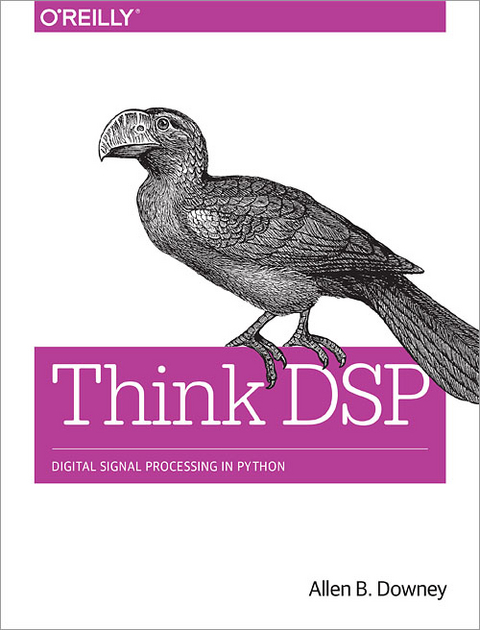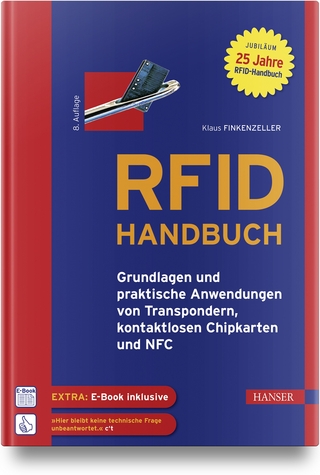
Think DSP
O'Reilly Media (Verlag)
978-1-4919-3845-4 (ISBN)
If you understand basic mathematics and know how to program with Python, you’re ready to dive into signal processing.
While most resources start with theory to teach this complex subject, this practical book introduces techniques by showing you how they’re applied in the real world. In the first chapter alone, you’ll be able to decompose a sound into its harmonics, modify the harmonics, and generate new sounds.
Author Allen Downey explains techniques such as spectral decomposition, filtering, convolution, and the Fast Fourier Transform. This book also provides exercises and code examples to help you understand the material.
You’ll explore:
Periodic signals and their spectrums
Harmonic structure of simple waveforms
Chirps and other sounds whose spectrum changes over time
Noise signals and natural sources of noise
The autocorrelation function for estimating pitch
The discrete cosine transform (DCT) for compression
The Fast Fourier Transform for spectral analysis
Relating operations in time to filters in the frequency domain
Linear time-invariant (LTI) system theory
Amplitude modulation (AM) used in radio
Allen Downey is a Professor of Computer Science at Olin College of Engineering. He has taught at Wellesley College, Colby College and U.C. Berkeley. He has a Ph.D. in Computer Science from U.C. Berkeley and Master's and Bachelor's degrees from MIT.
Chapter 1Sounds and Signals
Periodic Signals
Spectral Decomposition
Signals
Reading and Writing Waves
Spectrums
Wave Objects
Signal Objects
Exercises
Chapter 2Harmonics
Triangle Waves
Square Waves
Aliasing
Computing the Spectrum
Exercises
Chapter 3Non-Periodic Signals
Linear Chirp
Exponential Chirp
Spectrum of a Chirp
Spectrogram
The Gabor Limit
Leakage
Windowing
Implementing Spectrograms
Exercises
Chapter 4Noise
Uncorrelated Noise
Integrated Spectrum
Brownian Noise
Pink Noise
Gaussian Noise
Exercises
Chapter 5Autocorrelation
Correlation
Serial Correlation
Autocorrelation
Autocorrelation of Periodic Signals
Correlation as Dot Product
Using NumPy
Exercises
Chapter 6Discrete Cosine Transform
Synthesis
Synthesis with Arrays
Analysis
Orthogonal Matrices
DCT-IV
Inverse DCT
The Dct Class
Exercises
Chapter 7Discrete Fourier Transform
Complex Exponentials
Complex Signals
The Synthesis Problem
Synthesis with Matrices
The Analysis Problem
Efficient Analysis
DFT
The DFT Is Periodic
DFT of Real Signals
Exercises
Chapter 8Filtering and Convolution
Smoothing
Convolution
The Frequency Domain
The Convolution Theorem
Gaussian Filter
Efficient Convolution
Efficient Autocorrelation
Exercises
Chapter 9Differentiation and Integration
Finite Differences
The Frequency Domain
Differentiation
Integration
Cumulative Sum
Integrating Noise
Exercises
Chapter 10LTI Systems
Signals and Systems
Windows and Filters
Acoustic Response
Systems and Convolution
Proof of the Convolution Theorem
Exercises
Chapter 11Modulation and Sampling
Convolution with Impulses
Amplitude Modulation
Sampling
Aliasing
Interpolation
Summary
Exercises
| Erscheinungsdatum | 04.08.2016 |
|---|---|
| Verlagsort | Sebastopol |
| Sprache | englisch |
| Maße | 179 x 233 mm |
| Gewicht | 306 g |
| Einbandart | kartoniert |
| Themenwelt | Mathematik / Informatik ► Informatik ► Programmiersprachen / -werkzeuge |
| Mathematik / Informatik ► Informatik ► Theorie / Studium | |
| Mathematik / Informatik ► Mathematik | |
| Technik ► Elektrotechnik / Energietechnik | |
| Technik ► Nachrichtentechnik | |
| Schlagworte | Digitale Signalverarbeitung • Digital Signal Processing DSP • Python |
| ISBN-10 | 1-4919-3845-5 / 1491938455 |
| ISBN-13 | 978-1-4919-3845-4 / 9781491938454 |
| Zustand | Neuware |
| Haben Sie eine Frage zum Produkt? |
aus dem Bereich


